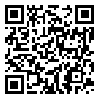BibTeX | RIS | EndNote | Medlars | ProCite | Reference Manager | RefWorks
Send citation to:
URL: http://journal.zums.ac.ir/article-1-128-en.html

 , Asghar Akbari
, Asghar Akbari 
 , Fatemeh Ghiasi
, Fatemeh Ghiasi 
 , HamidReza Mahmoudzadeh
, HamidReza Mahmoudzadeh 
 , Zahra Heidari
, Zahra Heidari 
 , Homeira Rashidi
, Homeira Rashidi 

Background & objective: Among the most common problems in patients with diabetes mellitus is the faulty healing of foot ulcer wounds which leads to foot or leg amputations. Many attempts were done to treat diabetic foot ulcers. This study evaluated the effect of vacuum-compression therapy (VCT) on healing diabetic foot ulcers.
Materials & Methods: A single-blinded, randomized clinical trial was conducted in Zahedan in 2006. Twenty-two patients with diabetic foot ulcer limbs were used for this study through simple non-probability sampling. Patients were randomly assigned to either an experimental group or a control group. The surface area of the foot ulcer was measured serologically based on Cavalieri’s Principle after 3 weeks and before any intervention. The point counting method was chosen to measure the surface area. In addition to the conventional therapy, the experimental group was also treated with vacuum-compression therapy produced by Vasotrain (VCT). The control group received conventional therapy only, which included debridement, systemic antibiotics, wound cleaning with normal-saline, and daily dressings. Independent-samples t-test and paired t-test allowed for comparisons between the pretreatment and post-treatment test results between groups and within groups, respectively.
Results: The mean of foot ulcer surface area decreased from 48.05±10.3 mm2 to 34.6±4.4 mm2 in the experimental group (P<0.01) and also from 59.9±14.4 mm2 to 56.8±13.8 mm2 in the control group (P<0.01). The surface area of the foot ulcer in the experimental group and control group decreased by 28.4 percent and 6 percent respectively (P<0.05). After the treatment a significant decline in the surface area of the foot ulcer was observed within the experimental group in comparison to the control group (P<0.01).
Conclusion: Vacuum-compression therapy enhances diabetic foot ulcer healing when used in conjunction with appropriate wound care. It is recommended that patients with diabetic foot ulcer and non-healing wounds achieve wound healing and limb preservation by using a vacuum-compression therapy.
Received: 2007/11/13 | Accepted: 2014/06/30 | Published: 2014/06/30
| Rights and permissions | |
 |
This work is licensed under a Creative Commons Attribution-NonCommercial 4.0 International License. |


